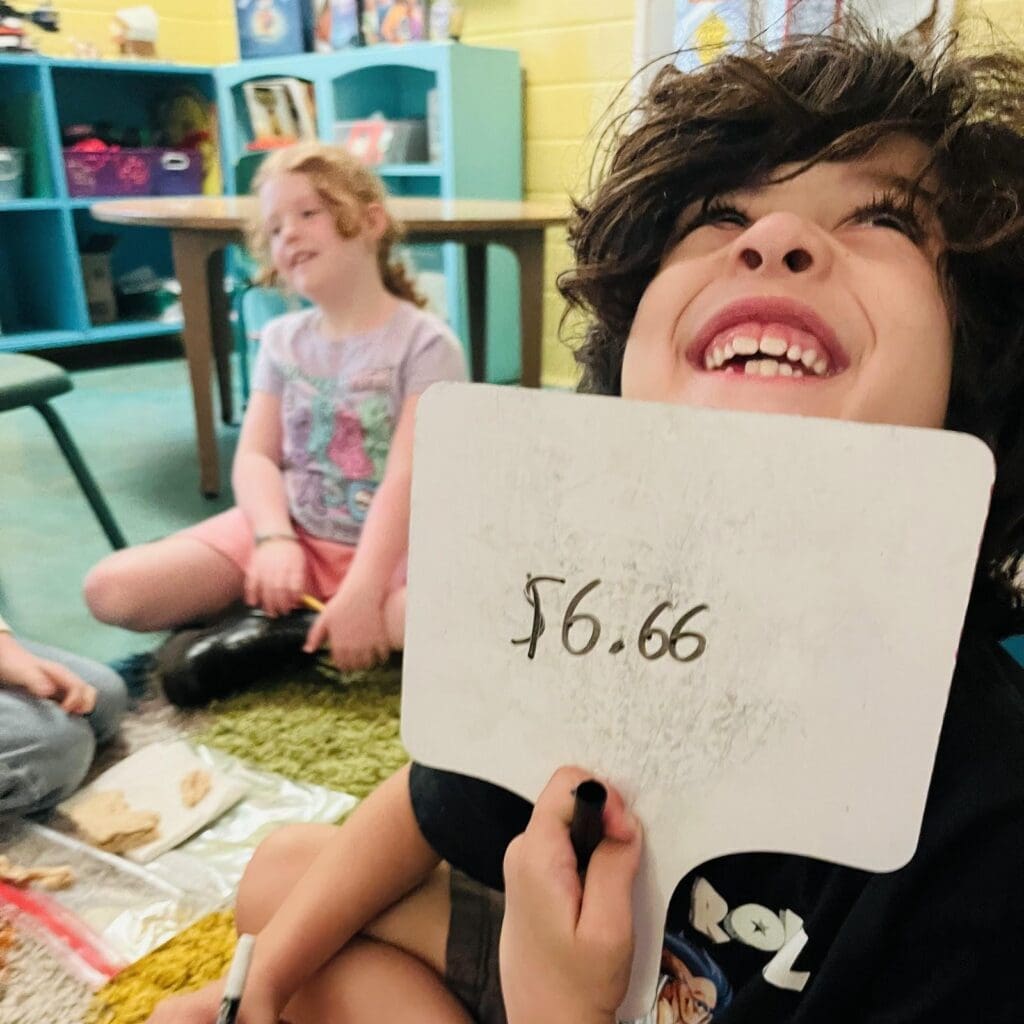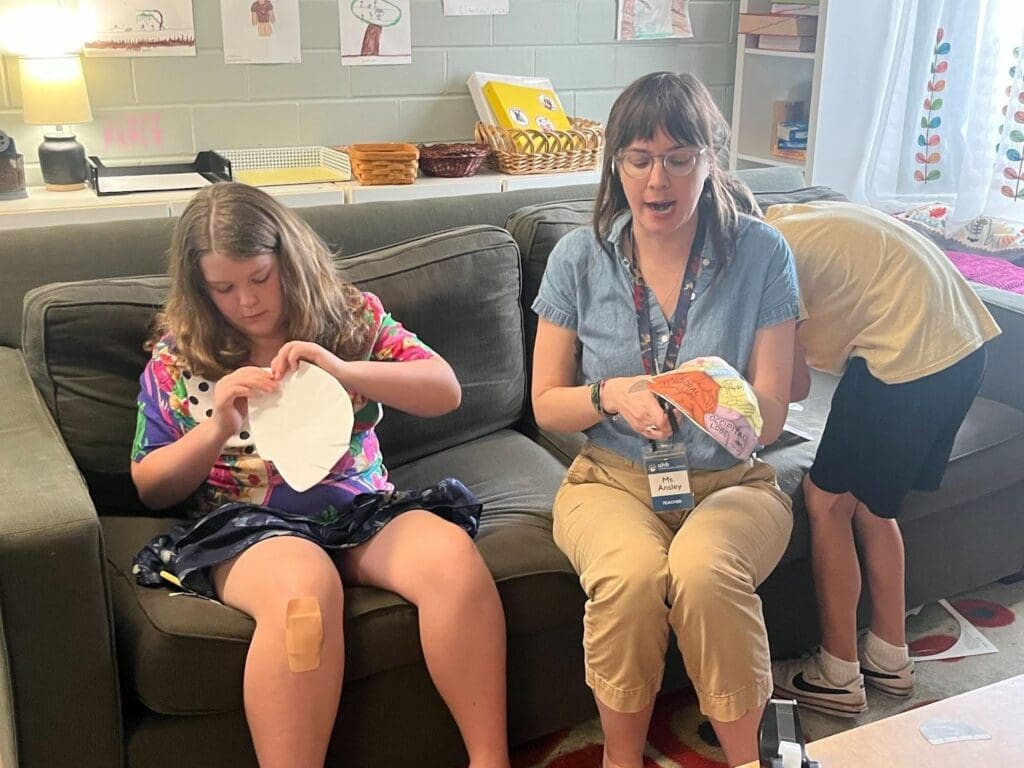Math –
 | 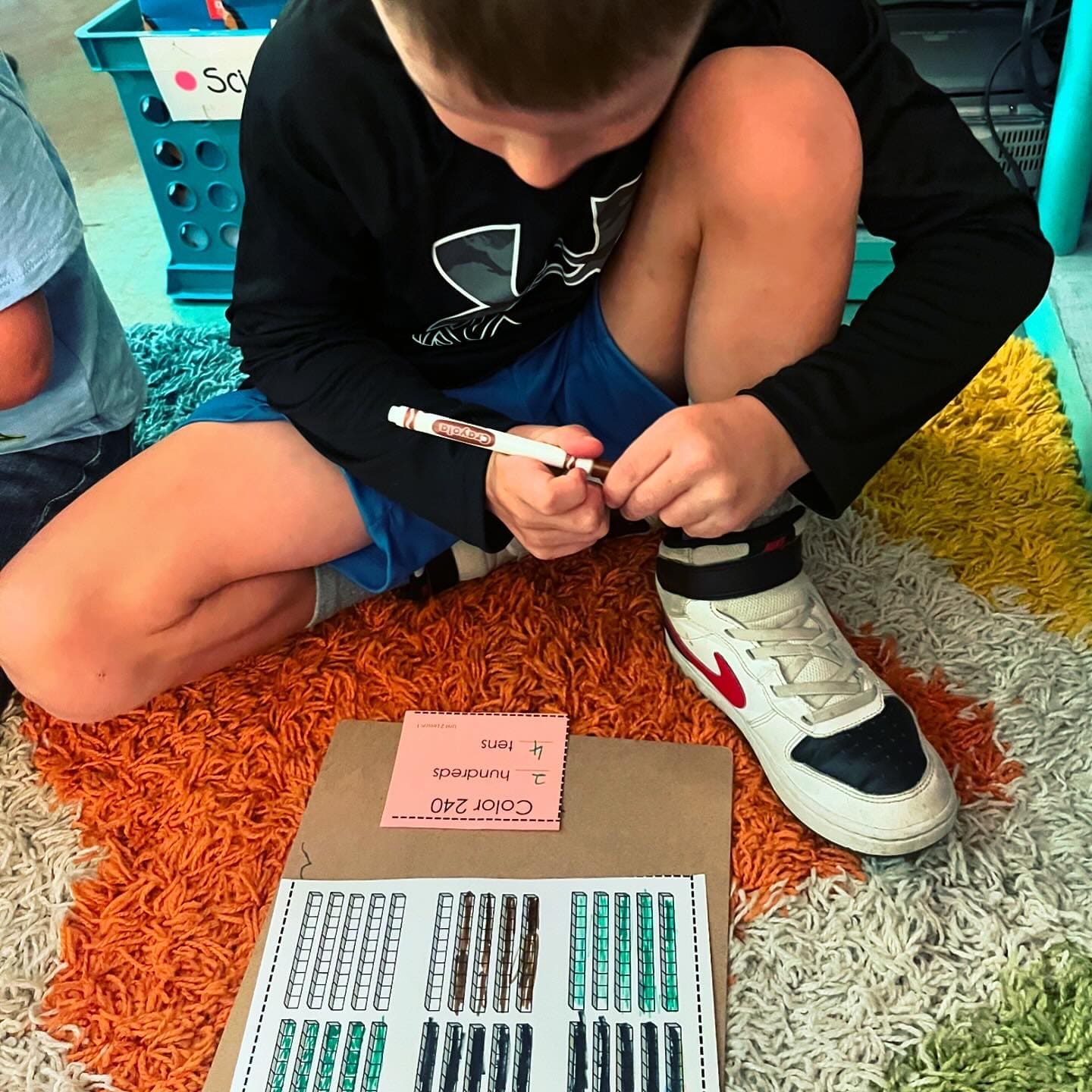 |
|---|
Our math groups are building numerical reasoning. Numerical reasoning involves processing numerical patterns logically and easily. People with strong numerical reasoning excel at more than addition, multiplication, and division. They easily process, analyze and interpret numerical charts, trends, and relationships. We know it is key to place an emphasis on deep conceptual understanding through open-ended problem solving where the focus is on explaining strategies rather than just focusing on finding the correct answer. But we also know that learning your math facts is crucial because they act as the foundation for more advanced math concepts, allowing students to solve complex problems faster and more accurately by freeing up their working memory to focus on problem-solving strategies rather than basic calculations.
It is a delicate balance we are striving for. We see the importance of learning the more traditional algorithms and practicing them, as well as math facts, regularly to ensure foundational mastery, but we also want to challenge students to think critically about how they might go about solving the problem by “discovering” a method of solving it. So you will see your kiddos bridging between these philosophies.
This week Ms. Andrea’s crew wrapped up a unit solidifying number sense, while Ms. Kelly’s group had loads of practice rounding to the nearest 10 and 100 but we also had daily number talks as warm ups. Number talks are a valuable classroom routine for developing efficient computational strategies and communicating mathematical reasoning. The kids completed daily 2-step word problems and then challenged themselves with logic puzzles that combine logical problem solving skills with their knowledge of addition and subtraction facts. Each board has 2 addition and 2 subtraction equations with missing numbers. The kids were given tiles numbered 0-9 and must place each tile on the board (only using them once) to make all the equations correct. Sounds easy, but it is not! Talk about using your growth mindset and perseverance and numerical reasoning skills! Our math brains work hard! 🧠 💪🏻
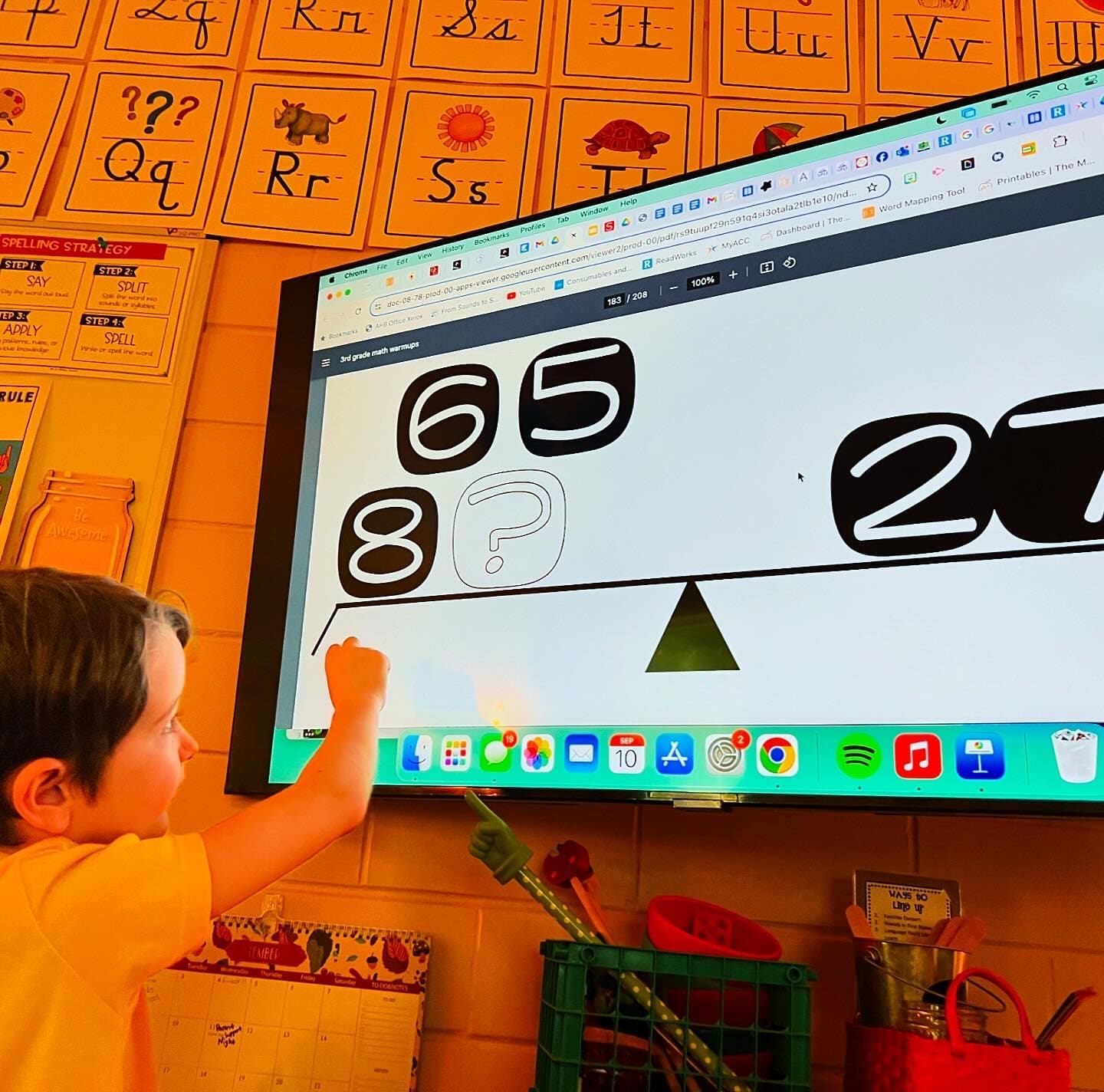 | 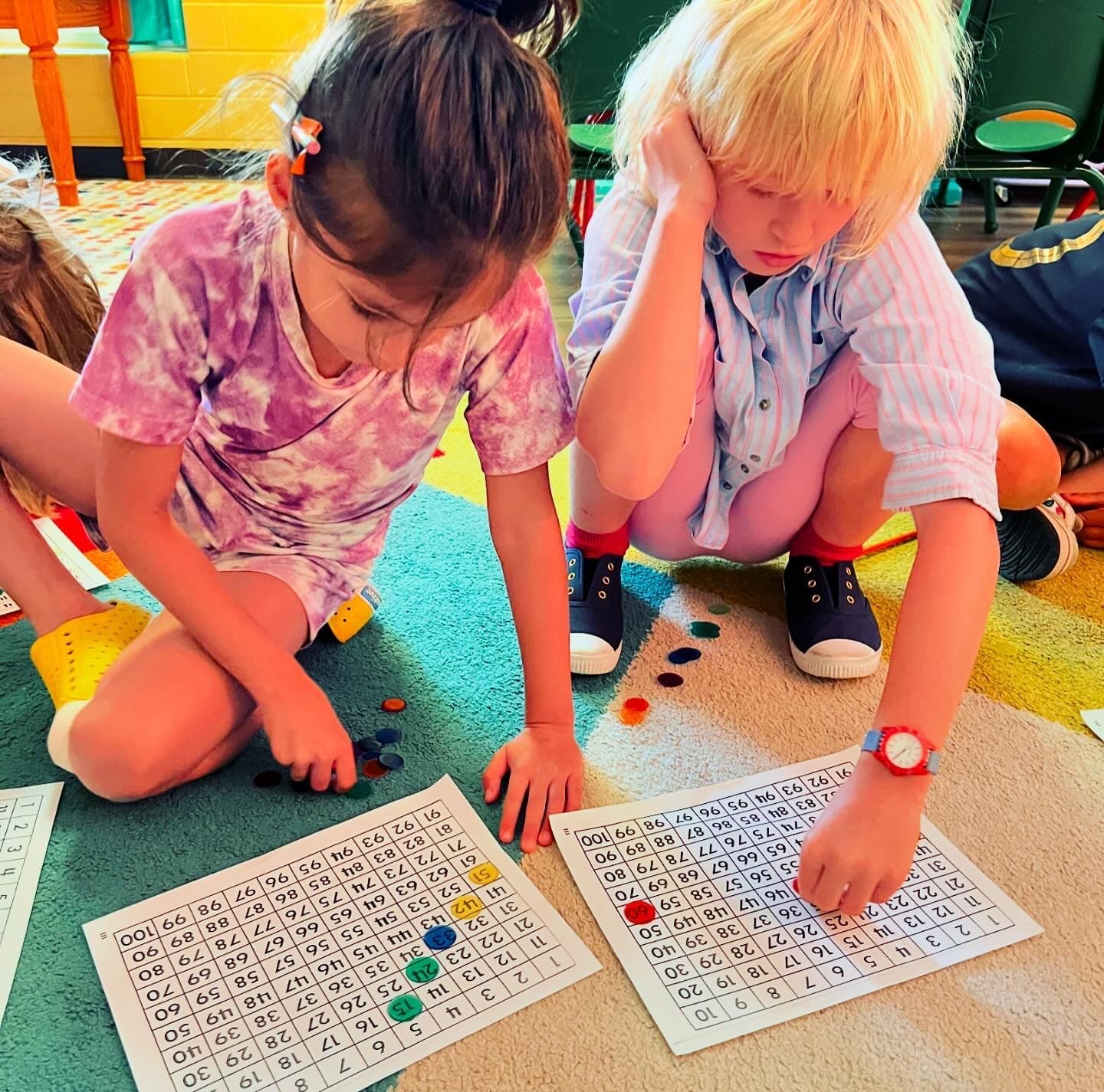 |
|---|
Reading –
Ms. Kelly’s reading group kept plugging away at our review of 3 letter blends this week and are practicing a skill that is not on anyone’s top 10 list of fun skills- rereading to find text evidence. No, it’s not very sexy. * BUT* It’s so crucial for comprehension and for writing a thorough/detailed response- especially as the kids get older and are reading and responding to more difficult texts. It gets harder and harder to retain all the details, and one must go back to find the specific features. Learning to search for evidence inside a text so you can write a thorough answer is not an easy skill for anyone and this is why you will see the kiddos practicing on simpler texts so as not to get frustrated! Trust us! The kids may not appreciate the value of rereading to find the evidence to support our responses. But we do and we know you do too. And starting this practice now will help to create a successful habit for the future.
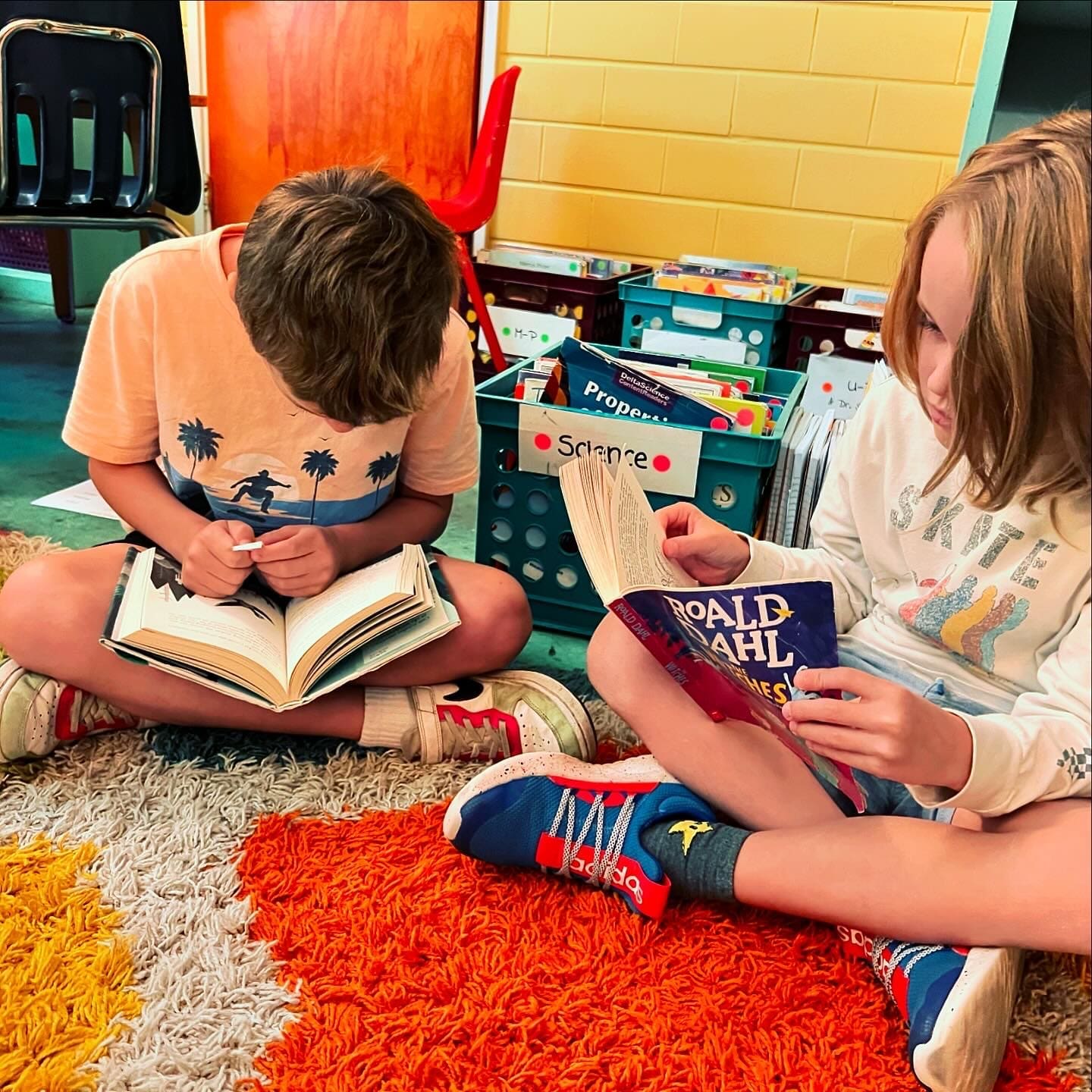 | 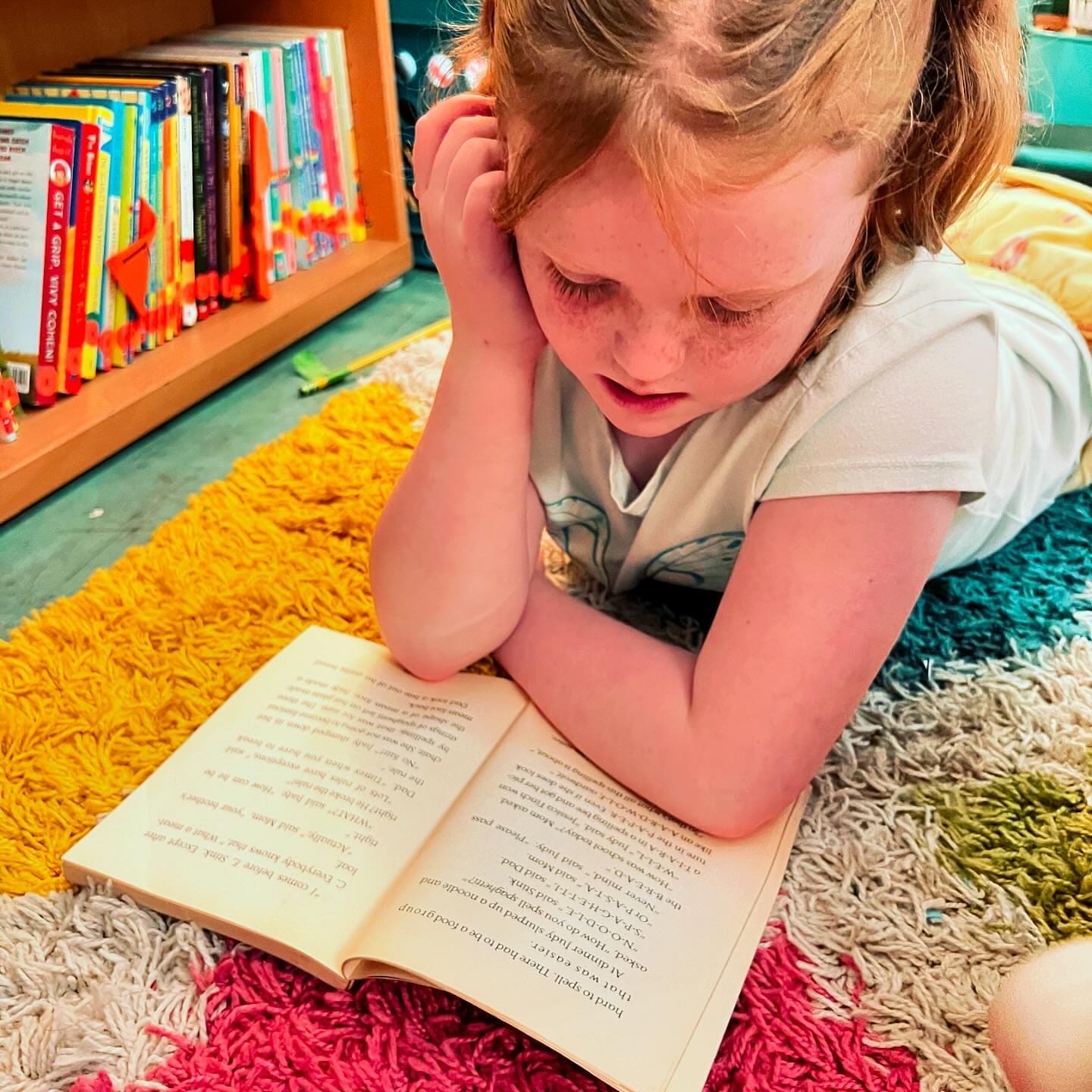 |
|---|
Ms. Andrea’s reading group reviewed short vowel sounds this week. We also worked on our daily sentence construction challenge. We used a photograph as a topic to write many different types of sentences. Then we continued on with our Author’s Purpose study by examining different photos and coming up with various persuasive, informative, and entertaining texts we might write about them.
At the end of the week, the Beta 2s took their spelling check in and played catch-up with some cursive handwriting! We also finished our week’s worth of intensive sentence construction work. Our challenge this year is to improve the quality of our sentences by adding vivid details, including a variety of interesting vocabulary words and multiple types of sentences.
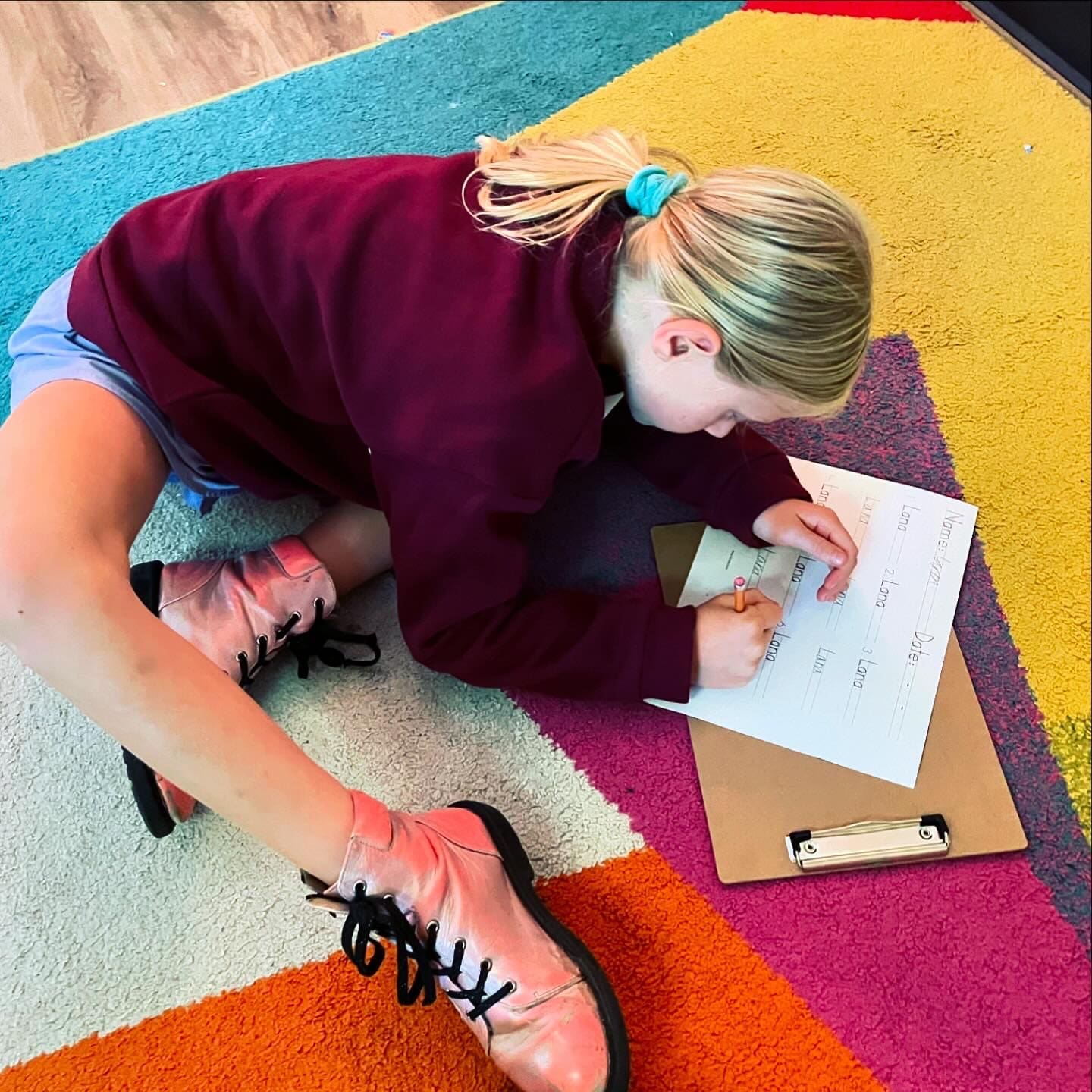 |  |
|---|
Writing –
The Beta authors have been writing feverishly this week! At the beginning of the week we learned that good writers paint word pictures so their readers can see the story in their minds. We tested this idea. Ms. Kelly had the kids draw a picture of what she described (with very little detail)- “The barn stood in the grass”. When the kids held up their pictures they all looked quite different. Hmmmmm. Why didn’t all of their pictures look like what Ms. Kelly was picturing in HER head??? Then she tried again, this time giving more detail about the scene, and lo and behold the kids’ drawings looked just like what she envisioned! The kiddos were then encouraged to read over their personal narratives with a new lens- by adding the details or “word pictures” so the reader will see what we want them to see!
We also had a quick discussion about creating a satisfying ending. Here is an important writing secret! Writing “The End” at the bottom of our paper doesn’t necessarily mean that our story is really finished. To complete our narrative we need to write a satisfying ending that leaves our reader with a sense of closure. The story should be complete with no unanswered questions. Again, we reread through our writing, making sure we had an ending that would satisfy our readers.
Many are now complete or almost complete with their first drafts. Needless to say they were slightly disappointed when told our personal narratives are not done! Revision time! 😜
Revising is an important way to learn about the craft of writing. Phyllis Whitney famously wrote, “Good stories are not written. They are rewritten.” Revision is the process of reviewing, refining, and improving written compositions. It is a crucial step in the writing process that helps students develop their writing skills and produce more polished and effective pieces of work. Revision goes beyond simply correcting spelling and grammar; it involves rethinking and reworking the content, structure, and style of a written piece.
The teachers are working one on one with the kids to begin our first round of revisions. And things are looking good!
 | 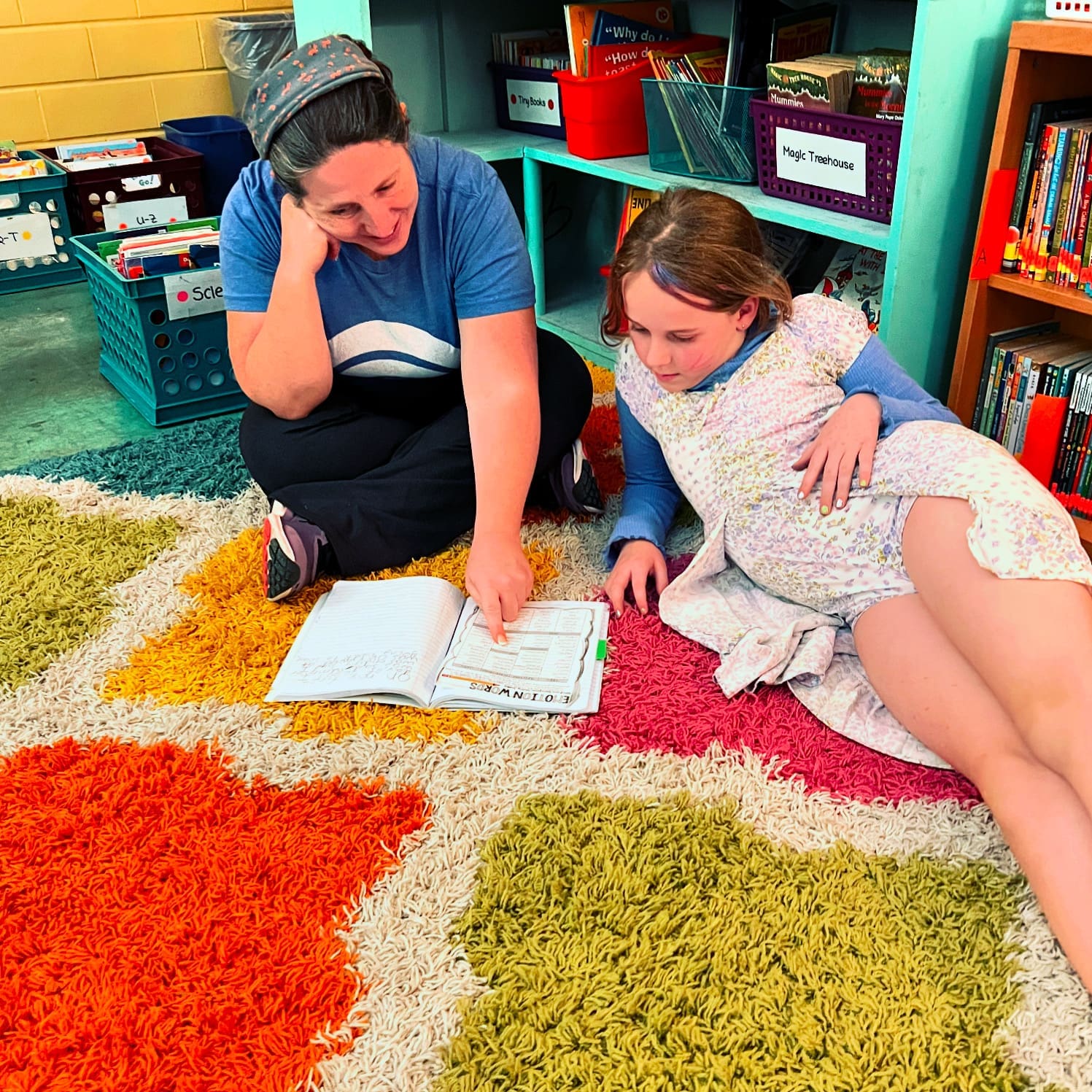 |
|---|
Theme –
We began circuit week by challenging the Betas to light up a bulb using a battery, wire, a piece of electrical tape & a lightbulb. No explanation given! The kids explored the supplies & attempted many different configurations to get the lightbulb to glow. Through trial and error, eventually everyone discovered that in order to make a complete simple circuit they must connect the positive to the negative side of the battery. We also played Pass the Electron, our bodies serving as the wire to pass the “electron” along to one another to keep the electricity flowing.
We learned lots of new vocabulary along with our electricity exploration. We reviewed what an electric current and circuits are and learned the difference between an open and closed circuit (for some, it was counterintuitive). We looked at some circuit sketches to determine whether they were open or closed and designed our own circuits.
Towards the end of our week we worked with partners to attempt to build a series or parallel circuit with 2 light bulbs, and built a complete circuit with a switch by attaching wires to a battery and lightbulb using electrical tape and a clothespin(!). For our switch we used a paperclip! These circuit labs were not easy to say the least. A can-do attitude and the ability to persevere when the going got tough was key to the success of the partners. The power of YET led to empowerment and a more positive outlook and outcome!
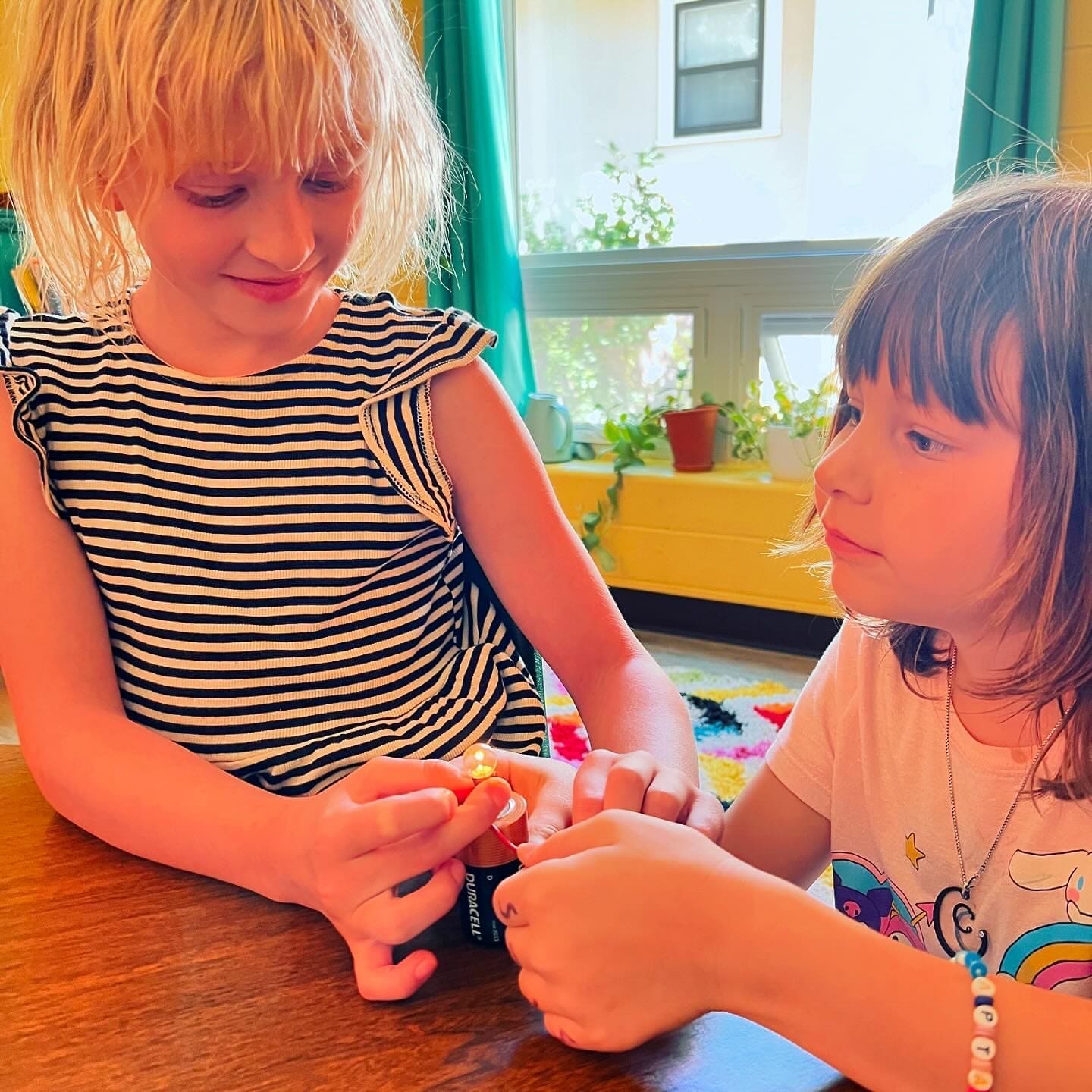 | 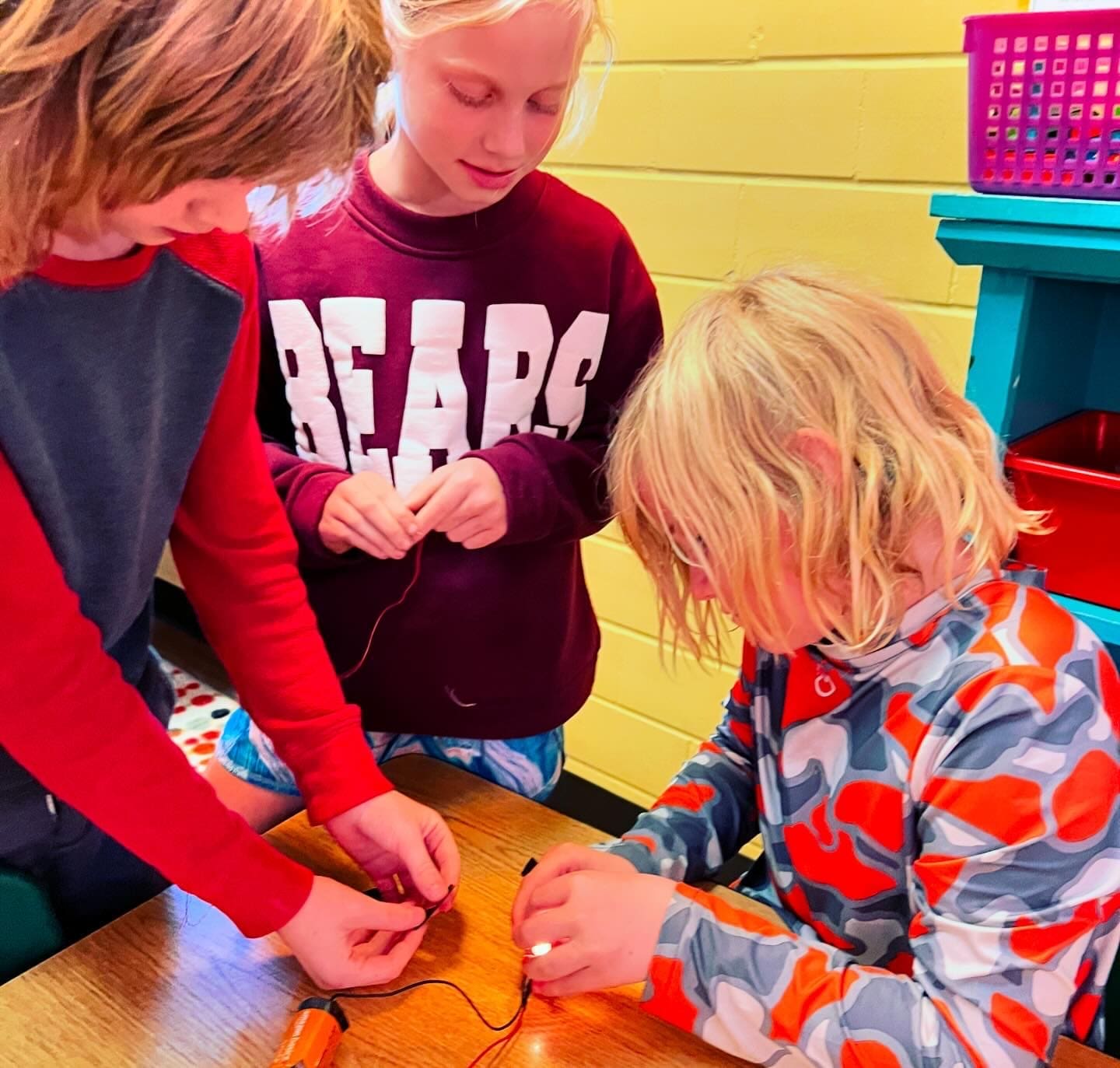 | 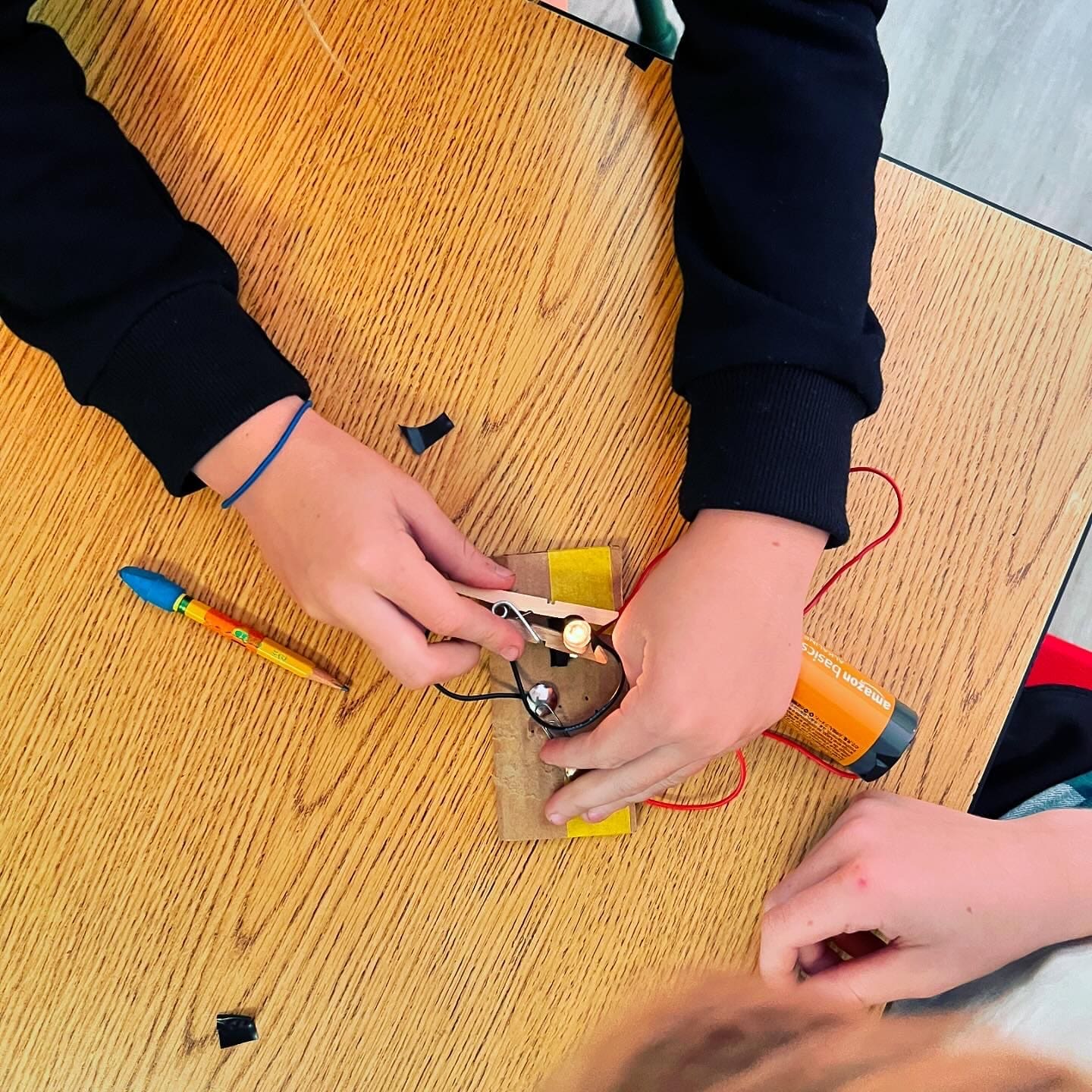 |
|---|---|---|
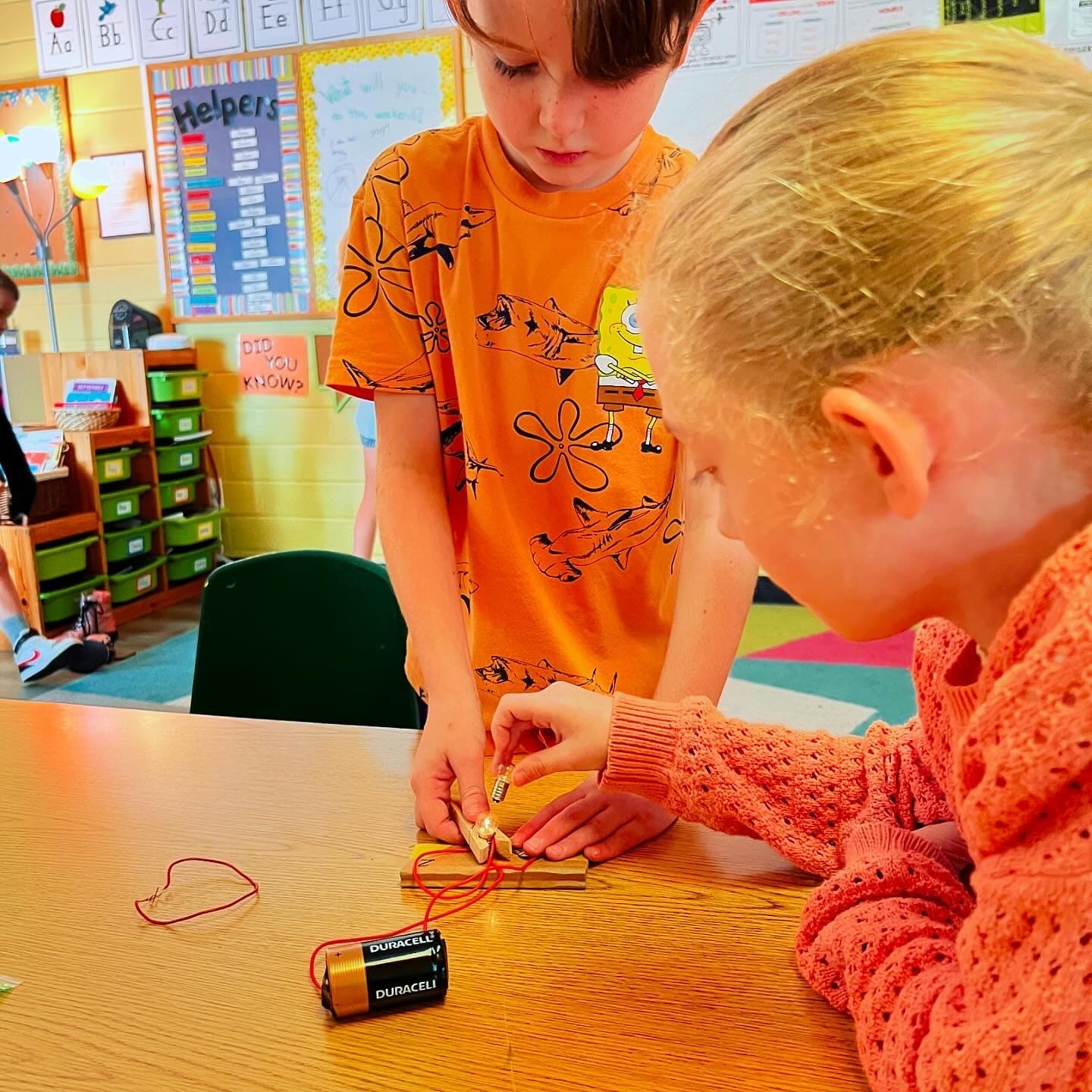 |  | 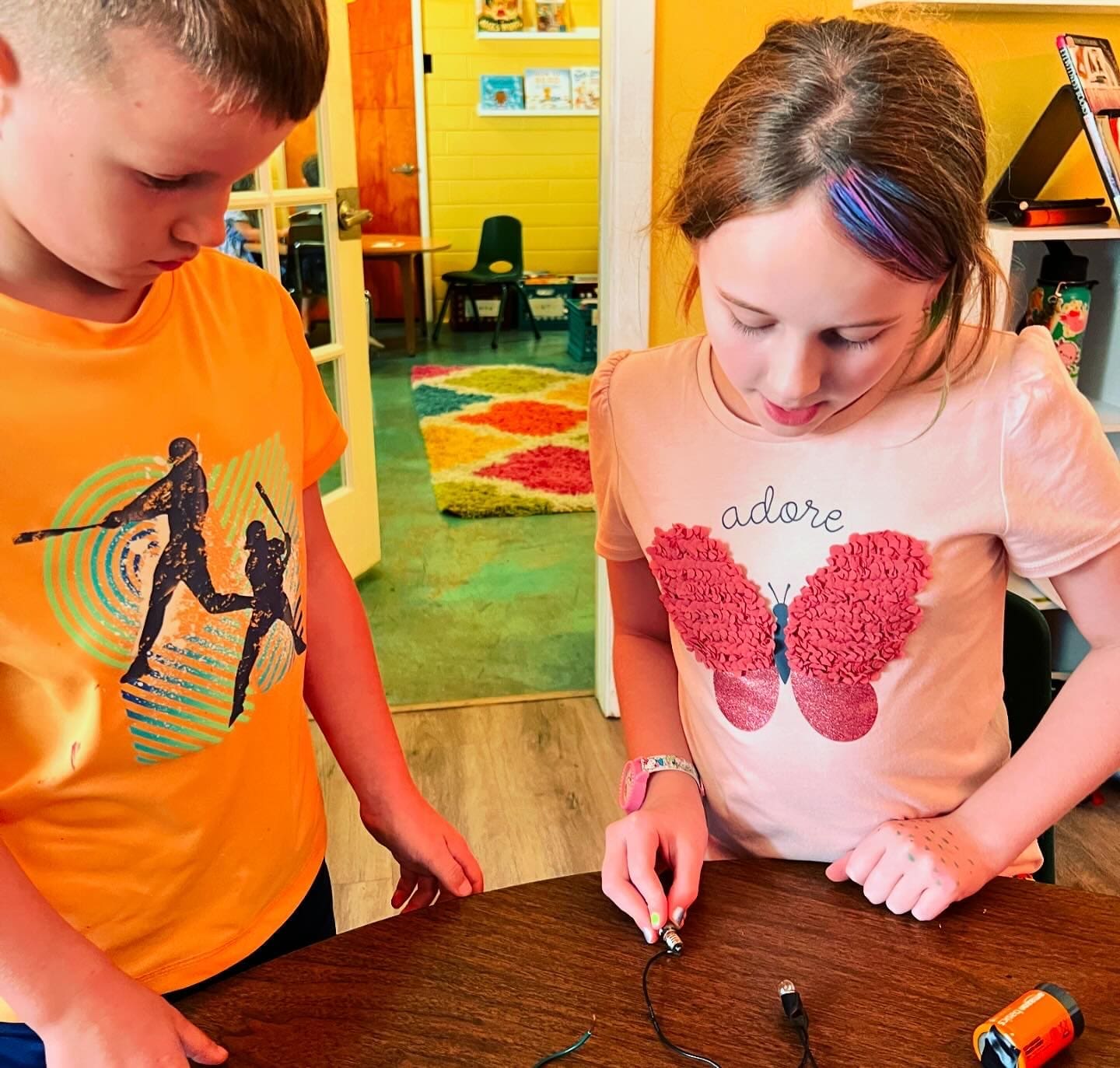 |
 |  | 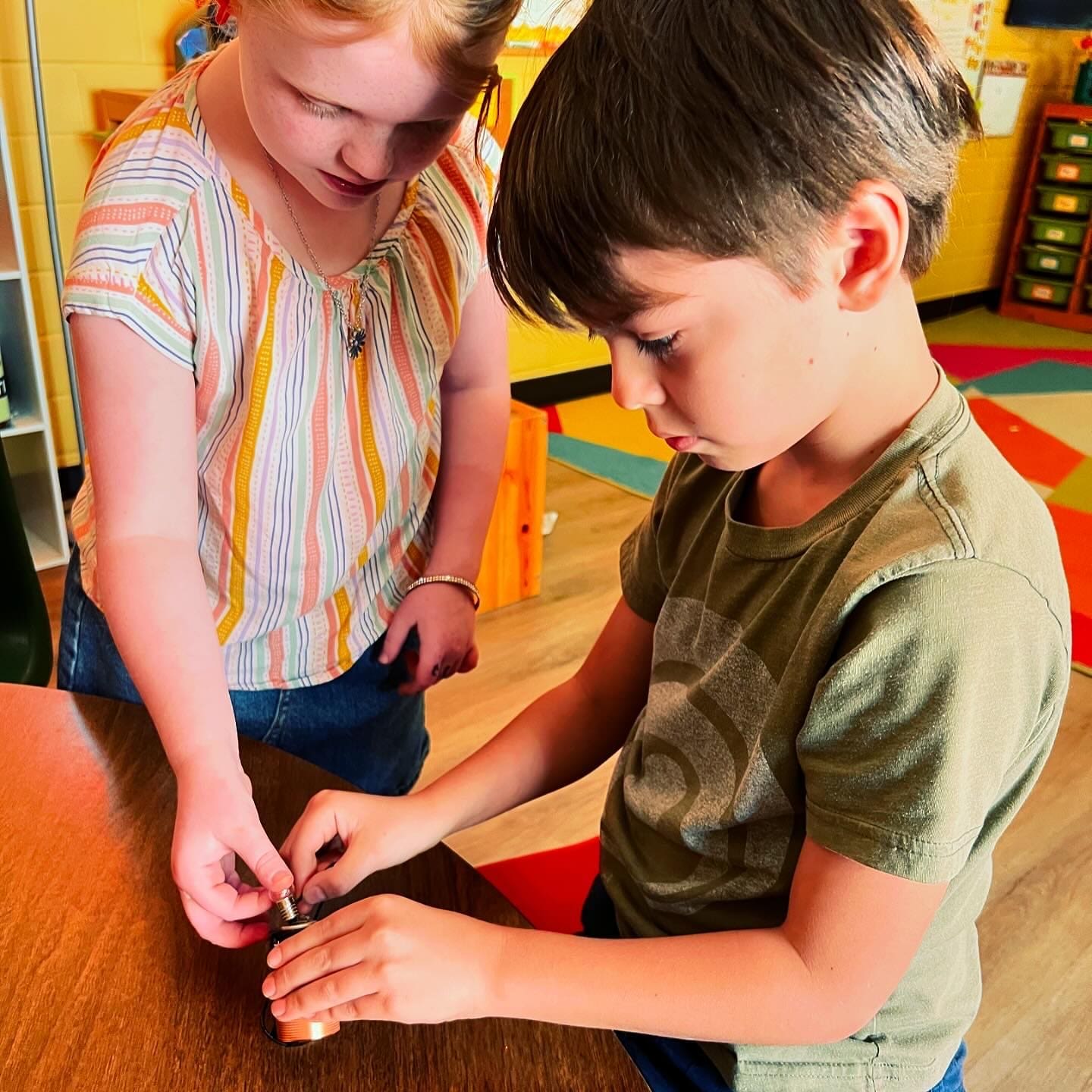 |


